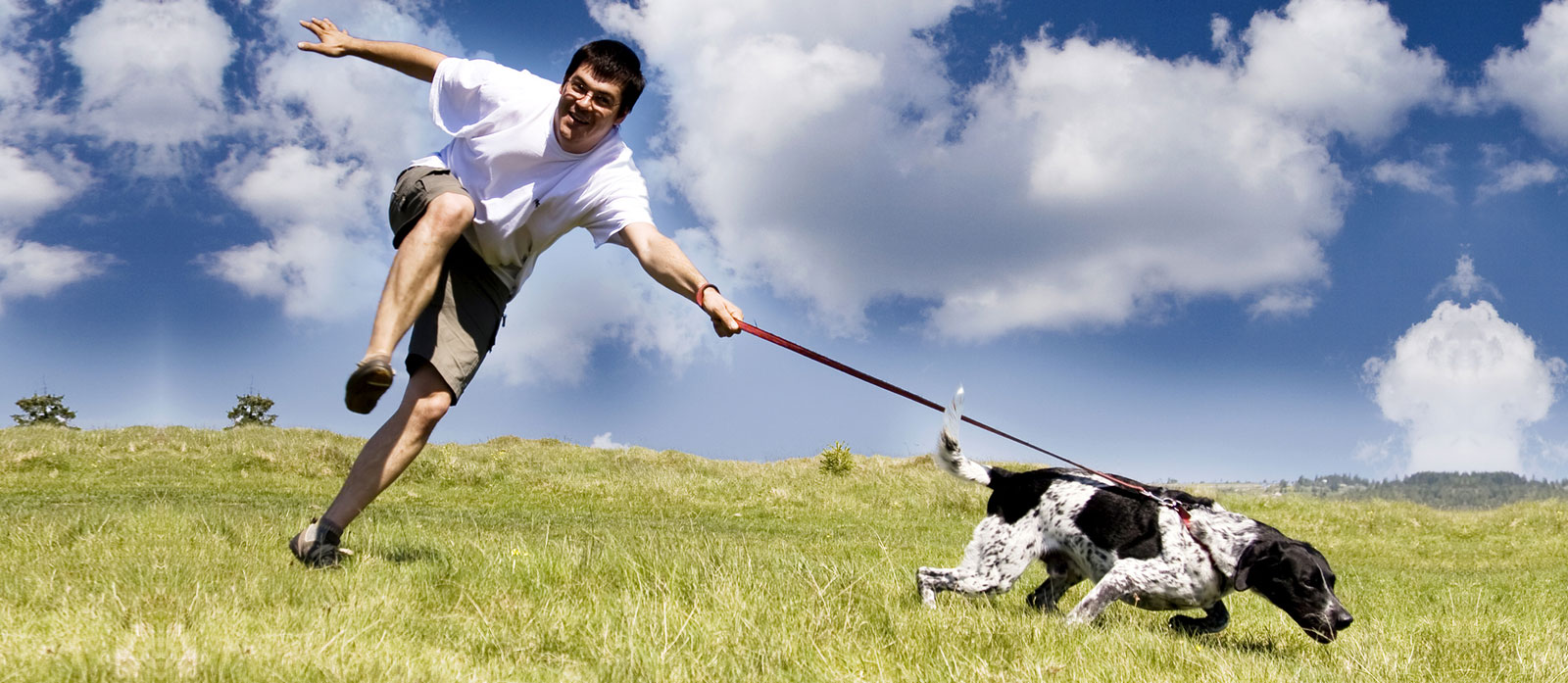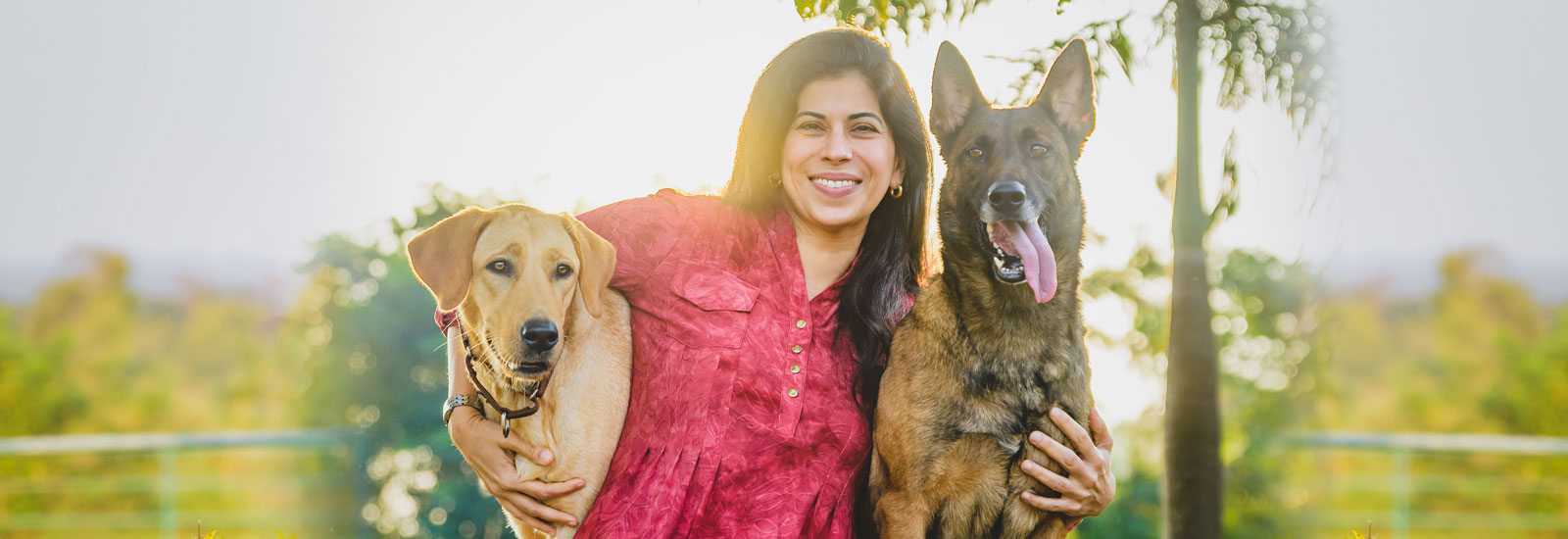
Stop a dog pulling on the leash
One of the many perks of owning a dog is the long walks you and your best friend can take together. Not only is walking a great form of exercise, but it’s also a wonderful way to spend quality time with your dog. Most dogs love going for a walk. Sometimes though, the same cannot be said for the owners. When the evening stroll becomes a shoulder-wrenching exercise session, the walk becomes a drag – literally! One of the biggest training problems an owner faces, today, is a dog that pulls on the leash.
If your dog takes you for a walk, rather than the other way around, don’t despair. It is possible to take the lead. Listed below are a few of the most common reasons why dogs pull and the solutions.
When a dog knows it’s on its way to some place exciting, it may pull in an attempt to get there faster. This kind of dog drags you all the way to the park, but walks well on the way home. To slow down the dog, try to change your route to the park, every couple of days. This way he cannot predict when he will get to the park. Once you get there, don’t leave him immediately, walk around with him on the leash for awhile, then get him to carry out a few basic commands before you finally let him go.
Another way to reduce the pulling is to abruptly change direction every time your dog gets ahead of you, so that your dog finds himself suddenly behind or beside you instead of forging in front of you. Initially, your dog will be confused, but will soon realise that pulling on the leash actually moves him away from his chosen destination and will walk well to get there faster.
Some dogs have a naturally dominant personality. This kind of dog prefers to lead rather than be led. No matter how much training you put a dominant dog through, he will still pull. This is due to a pack structure problem: to obey your command, the dog needs to recognise you as the leader of his pack, which in all probability he does not.
Reducing the dog’s status in the pack, through a well-charted behaviour program, will reduce the pulling. A follow up with a bit of control training will show excellent results.
A dog that has not learnt to accept restraint, at a young age, will pull on the lead when older. To teach your dog the concept, put it on a simple collar and lead, and stand with the dog in a quiet room. On your part, you should keep the leash slack. Every time your dog pulls, give the leash a quick tug, then immediately release so the leash is slack again. Keep at it till your dog stops pulling. Once you feel that he has the concept of keeping the leash slack, you can start walking him. Every time he pulls, stop walking and give the leash a quick tug. Only resume walking when the leash goes slack. Do not give your dog a chance to strain against the leash or drag him back to your side.The leash should always remain loose except for that one split second it takes to give a tug. The idea is to correct the dog every time the leash tightens, not after he is already pulling.
An owner should teach a puppy to accept the restraint of a leash. Often, a puppy does not have a collar and leash put on until its first outing. At a time when the puppy is coping with the sudden impact of all the new and exciting sights, sounds and smells, the last thing it wants to feel is a leash tugging at its neck. The dog’s natural reaction is to thrash and strain against the leash in an effort to escape or to just sit down and refuse to budge. This creates a negative association of the leash in the dog’s mind and leads to the dog pulling in future, in an attempt to get away from the restraint.
An owner should start leash training as early as possible at home. Regularly attach the collar and leash for a short period of time, preferably before a pleasurable experience. By the time he is old enough to go out he will actually be happy to have the leash and collar on.
When a dog starts pulling, most owners try to rectify the situation by walking the dog on a very short leash. This leads to a situation where as soon as the leash is tightened, the dog has something to strain against. It’s a well-known principle that pressure invites counter pressure. Don’t use a lead that is so short that your dog has no option but to pull. If the lead is tight even when the dog is by your side, your dog will learn that he has to pull every step of the way to get anywhere. Attach a long leash or a “Flexi Leash” to the dog. Each time he pulls, let go a bit of the leash. This should cause your dog to lose his balance and fall forward. A few repetitions of this quickly teach the dog not to pull.
An owner can unwittingly teach a dog how to pull on a leash. In an attempt to stop a dog from pulling, the owner commands ’heel’ and then gives the dog a sharp yank on the leash. This teaches the dog to brace himself every time he hears the word ‘heel’, to avoid the sharp tug on the neck that follows. The best way to put this right is to stop using the command altogether. Every time the dog pulls, the owner should stop walking, encourage the dog back to his side, praise the dog and start walking again.
If your dog has been pulling on the leash for a long time, it will take longer for him to learn to walk nicely. This is because he expects to be able to pull. By being consistent and patient, you can teach him to walk well and the two of you can finally look forward to many pleasant strolls together.
- How to Travel with Your Dog May 09, 2022
- How I Got My Dog to Like Me (and you can too..) May 04, 2022
- How to Train and Care for Cocker Spaniels April 22, 2022
- How to Train and Care for a Labrador April 06, 2022
- Why does my dog pull on the leash October 10, 2019
- Fun Games To Play With Any Dog September 25, 2019
- How To Get A Dog To Stop Jumping! September 08, 2019
- Secrets Of The World’s Best Trainers August 29, 2019
- Choosing The Best Dog Trainer August 19, 2019

